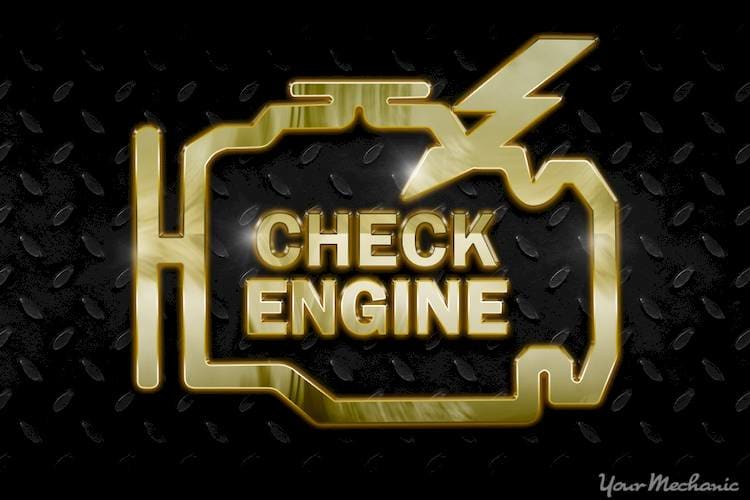A P0538 code indicates that the powertrain control module (PCM) has registered a problem related to an electronic pressure control solenoid or solenoid circuit.
What the P0798 Code Means
Computer controlled automatic transmissions actuate gear shifts and torque converter lockup via electronic pressure control solenoids. A P0798 code means that one of these solenoids is sending out readings that are out of parameters.
What causes a P0798 code?
- Low transmission fluid level
- Dirty or contaminated transmission fluid
- Internal mechanical failures
- Internal hydraulic passages blocked
- Failed electronic pressure control solenoid
- Failed PCM or transmission control module
What are the symptoms of a P0798 code?
- Limp-in mode
- Harsh shifts
- Transmission slipping
- Transmission overheating
- Poor fuel economy
- Failure of torque converter clutch to lock up or disengage
- Disabled shifting – stuck in one gear
- No detectable symptoms at all
- Stored code and illuminated malfunction indicator lamp (MIL)
Other codes related to transmission slippage, gear ratios, torque converter clutch/lockup or shift solenoids may accompany this code.
How does a mechanic diagnose a P0798 code?
Ever since electronic automatic transmissions were introduced in the mid-1980s, vehicles have used a computerized control system that governs shifts based on information on vehicle speed, transmission output speed, engine load and engine/turbine speed. It determines shift points and the proper gear ratio for a given speed or engine load, optimizing engine performance and fuel economy.
The powertrain control module (PCM) uses this data to regulate transmission fluid pressure, via a high pressure pump (driven by the torque converter) and pressure control solenoids. The solenoids then govern the flow of fluid through the transmission’s internal hydraulic circuits.
For a proper diagnosis, a technician will need a good quality scanner/code reader and a digital volt/ohmmeter (DVOM).
Any transmission diagnosis should start with an inspection of the transmission fluid on the dipstick. The fluid level should be within manufacturer’s recommendations and the fluid should be in good condition.
Fluid that smells burned is an indicator of transmission overheating, usually due to operation at a low fluid level. Internal mechanical failure may accompany burned fluid.
If fluid appears or smells burned, drop the transmission pan. Check for clutch material, metal shavings and other debris.
If debris is present in the transmission pan, a complete rebuild/fluid flush and new torque converter will likely be needed for the transmission to function properly.
If no debris is found in the pan, look closely for shorted or burned wiring or connectors in internal transmission wiring. Replace as needed. Most applications will require a full replacement of the internal transmission harness.
If the internal wiring, connectors and components all seem to be in good working order, connect the scanner to the diagnostic port and record any stored trouble codes. Freeze-frame the data.
Clear the codes and test drive the vehicle to see if codes return.
If codes don’t return, the problem may be an intermittent condition which may need to be allowed to worsen and return before a proper diagnosis can be made.
If transmission fluid is low, add fluid and find the source of a leak. Clean the bottom of the transmission, pan and crossmember using brake cleaner, then spray foot powder on the entire area to make it easier to track down the source and path of a leak.
If, after filling the transmission with the proper fluid, the code doesn’t return, it may have been caused by a low fluid level.
If the code returns and the transmission shows signs of slippage or delayed engagement, move on and check pump pressure using a manual pressure gauge.
Locate the appropriate port on the transmission housing and thread the end of the gauge to the port to record pump pressure. Compare your pump pressure readings with factory specs and repair accordingly.
Causes of low pump pressure can include a failed pump, clogged internal hydraulic passages, failed electronic pressure regulator or failed shift solenoids. Replacement of the pump will mean transmission removal and partial teardown.
If the transmission seems to operate normally but the code immediately returns, look for reference voltage and ground signals at the suspected pressure control solenoid.
Disconnect any related control modules from the circuit before checking circuit resistance, to ensure against damage.
Repair/replace any related systems circuits/connectors as needed. Retest the system to ensure that resistance and continuity are in line with factory specs. A manufacturer’s wiring diagram will be needed.
If all circuits are intact and resistance and continuity are within factory specs, connect the scanner and attempt to manually engage the electronic pressure control solenoid. If the solenoid will not actuate manually, replace the solenoid and retest the system.
If the control solenoid is good and all circuits are within factory spec, look for a defective high pressure pump, torque converter or PCM. Remember that PCM failure is rare.
Common mistakes while diagnosing P0798 code
In these instances, the electronic pressure control solenoid or wiring problems are often overlooked, with technicians going straight to the high pressure pump and replacing it in error.
How serious is a P0798 code?
A P0798 code can result in limp-in mode or a transmission that will not shift out of a given gear, and can lead to further problems.
What repairs can fix a P0798 code?
The parameters for setting a P0798 code can vary considerably from one manufacturer or even one model to another. Make sure you understand your vehicle’s make/model specs before going any farther.
Need help with a P0798 code?
YourMechanic offers certified mobile mechanics who will come to your home or office to diagnose and repair your vehicle. Get a quote and book an appointment online or speak to a service advisor at 1-800-701-6230.
Check Engine Light
trouble codes
P0798
No more waiting rooms! Our mechanics will come to you to diagnose and fix the P0798 code.





